#tumblr spotlight
Text
Spotlight: The Midnight Club
The cast of Mike Flanagan’s newest series, The Midnight Club, talk about their biggest fears, secret talents, and which cast member is the easiest to scare.
#the midnight club#midnight club#spotlight#tumblr spotlight#adia#ruth codd#iman benson#igby rigney#aya furukawa#sauriyan sapkota#chris sumpter#annarah cymone#entertainment spotlight#Mike Flanagan#midnightclub
2K notes
·
View notes
Text

the new creed (april 2024)
#art#art on tumblr#artist on tumblr#tumblr spotlight#wolf#wolves#dogs#bunnies#original arts#rabbits#cybercore#grungecore#y2k#y2k art#low poly art#ps1 graphics#ps1 aesthetic#weirdcore#oddcore#dreamcore#ps1#retro gaming#cyber goth#angelic cybercore#cyber grunge#cyber y2k#retro tech#fucking bnnuy#cyber fairy grunge#cyber fairy
71 notes
·
View notes
Text


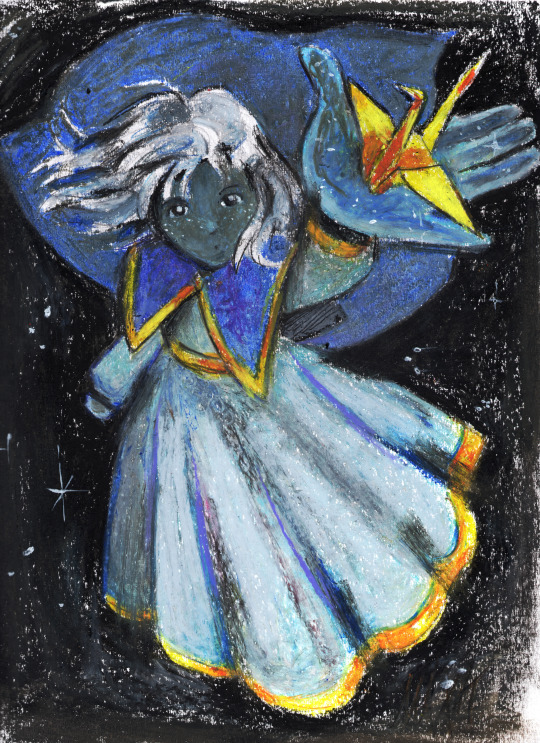
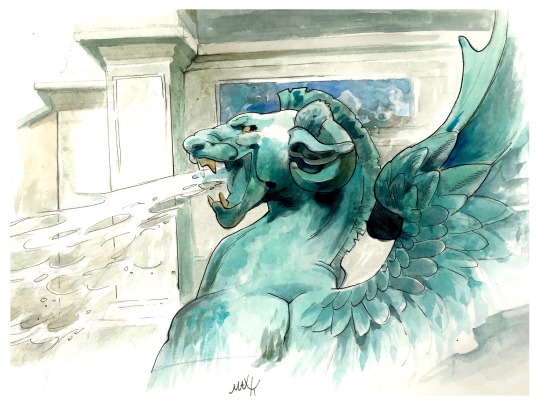
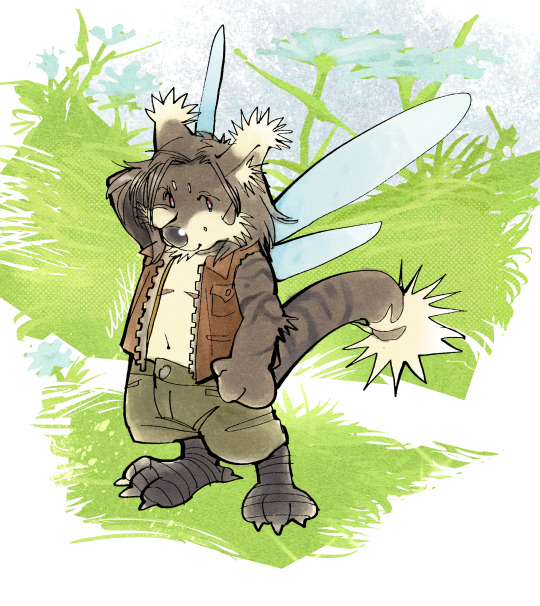



compilation of best/cleanest stuff so far this year ✍
which is ur favorite?
#manga art#manga style art#retro manga#anime art#traditional art#digital art#artists on tumblr#tumblr spotlight#artist alley#anime#manga#furry#anthro art#ttrpg art#lgbt art
45 notes
·
View notes
Photo
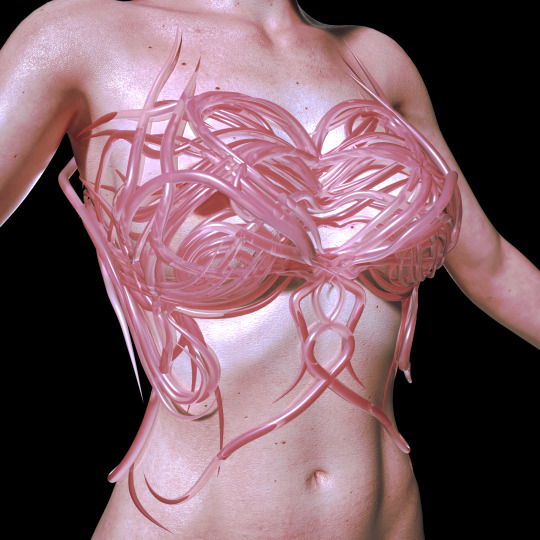

digital illustration and creative design by Abel Emmanuel
#mine#3d art#fashion#aespa#digital drawing#procreate#digital illustration#oc artwork#art ideas#goth core#goth#kawaii#kawaii core#japan core#tokyo#artists on tumblr#tumblr spotlight#fashion designer#clothing inspo#pink aesthetic#pastel aesthetic#drawing tutorial#nike#balenciaga#beyonce
28 notes
·
View notes
Text

my new single “talk it out” is now yours 🖤
5 notes
·
View notes
Text
if i was a food item
I
WOULD BE
A PEROGI!!!!!!!!!!!!!!!!!!
2 notes
·
View notes
Text
The Ruins PT.3
Short chapter.......^_^
Tianna and Sasha exchanged uneasy glances, their senses heightened by the eerie stillness that followed the distant scream. A chilling silence enveloped the woods, broken only by the rustling of leaves and the distant hoot of an owl.
Tianna, with a determined look, spoke up, "We can't just ignore it. Someone might need help. Let's go and check, but we need to be careful."
Sasha nodded nervously, clutching a small branch she had picked up as an improvised weapon. The two friends cautiously moved towards the direction of the scream, their footsteps muffled by the thick underbrush.
As they ventured deeper into the woods, the atmosphere became increasingly tense. The shadows played tricks on their imagination, and every rustle of leaves seemed to echo louder than before. The air was charged with an unspoken fear that gripped them both.
Suddenly, they stumbled upon a clearing, and there, lying on the ground, was Siena's lifeless body. The shock and horror struck Tianna and Sasha like a physical blow. Tianna gasped, her hand flying to her mouth, while Sasha took a step back, her eyes wide with disbelief.
The man who had taken Siena's life was nowhere to be seen. The only evidence of his presence was the chilling aftermath of his violent act. The silence returned, haunting and oppressive.
Tianna, overcome with grief and anger, clenched her fists. "We need to find this man. We can't let him get away with this."
Sasha hesitated but nodded, her initial fear transforming into a determination to bring justice to their fallen friend. Together, they set off into the woods, vowing to uncover the truth behind the mysterious and malevolent force that seemed to linger in the shadows, threatening the lives of those who ventured too deep into the heart of the unknown.
0 notes
Text
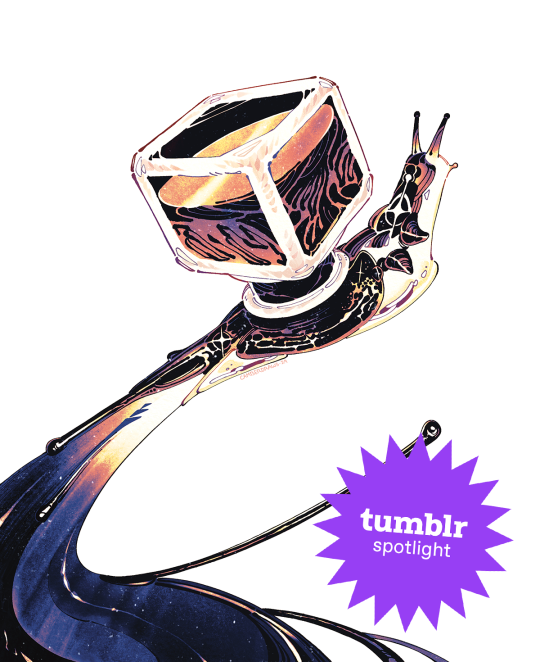
Creator Spotlight: @camberdraws
Hello! My name is Camber (any pronouns), and I’m a mixed media illustrator located in the southwestern United States. I love drawing everything, but I have a special interest in depicting strange creatures and environments, often accompanied by abstract imagery and mark-making. Professionally, I’ve worked creating concept art and 2D assets for museum exhibits, but currently, I am engaged full-time as a software developer and make standalone illustrations in my free time. I’ve been posting art on Tumblr since I was a teenager, and the site has been very welcoming towards my work to this very day!
Check out Camber’s interview below!
Did you originally have a background in art? If not, how did you start?
I’ve had an interest in drawing since I was barely sentient, but at thirteen years old I decided to become “serious” about art. I was all about reading tutorials and doing a ton of studies. I would tote my heavy instructional art books to school every single day (my poor back!) Despite all this, I decided to forgo art school in favor of a bachelor’s degree in Computer Science at my local college. Alongside my major, I received a minor in Art Studio with a specialization in fine art, which totally changed my views on creating artwork and drastically changed my style.
How has your style developed over the years?
As mentioned previously, my style did a 180 after I studied under some very skilled fine art professors! As a kid, my drawings were very realism-heavy and inspired by video game concept art. I mostly worked digitally, too. During college, I was thrown for a loop when we were instructed to do strange things like, for example, make a bunch of marks on paper using pastel, WITHOUT looking, and then turn said marks into a finished piece of art! I quickly and deeply fell in love with abstract work, and especially appreciated images that are not easily parsed by the viewer. Since then, I’ve made it my goal to combine abstract mark-making with more representational subject matter.
What is one habit you find yourself doing a lot as an artist?
Hmmm, one habit I really enjoy as an artist is strictly tracking the amount of time I spend drawing! I currently work a full-time job wholly unrelated to art, so I have to be careful with my time if I want to spend enough hours drawing each week. I created a spreadsheet that allows you to enter the amount of minutes you’ve drawn each day and calculate how much drawing time you still need to reach your weekly goal (I aim for 20 hours a week.) Having such a clear, numbers-based objective keeps me motivated to work like nothing else!
Over the years as an artist, what were your biggest inspirations behind your creativity?
I know this is a common inspiration, but Hayao Miyazaki’s work has been rewiring my neurons since I was a child. Seemingly all of my artistic interests can be summed up by the movie Princess Mononoke: it has strange/abstract creature designs, a strong focus on nature and environmental storytelling, and a mix of dark and hopeful themes. Additionally, I’ve been deeply inspired by video game series such as Zelda, Okami, Pikmin, and Dark Souls. But arguably, none of these have influenced me more than Pokemon! I’ve been drawing Pokemon since I could barely hold a pencil, and I haven’t stopped since! I believe my love of designing creatures originated with my endless deluge of Pokemon fanart during my childhood.
What is a medium that you have always been intrigued by but would never use yourself?
I’ve always been fascinated by 3D mediums and am so tempted to try them out! Whether that’s 3D models created digitally or sculptures made from clay, I profoundly admire artists who have this skill. Oftentimes, it feels like I don’t have time to delve into a totally different artistic paradigm. However, I feel very strongly that learning new skills can enrich your current work. I should take that advice and someday give 3D mediums a shot!
What is a recent creative project that you are proud of?
I am in the process of creating an art book (a dream of mine!) and have been executing smaller drawings of concepts I find interesting from both a visual and storytelling standpoint. A recent drawing for said book is that of a snail made of ink with an ink bottle as a shell, and it went absolutely viral! I’ve never had an experience like this as an artist before and it has been spectacular! I was able to open a shop using my newly acquired art printer and sell many prints of my snail. Creating something original, directly stemming from my interests, and having that resonate with so many people has been unreal. I couldn’t ask for more as an artist!
What advice would you give to younger you about making art that’s personal or truthful to your own experiences?
I would tell my younger self to chill out and experiment more! I was so caught up in the idea that I needed to have a realistic style to be considered “good.” I also believed that technical skill was the only measure of how worthy my art was. That’s not to say technical skill doesn’t matter, but I now firmly believe the creativity and voice of your ideas far outweigh the skill of execution in terms of importance. Technical skills should elevate ideas, not the other way around. Once I began to revel in strange ideas and stories for my work, depicted oftentimes in odd styles or mediums, I truly found my voice as an artist.
Who on Tumblr inspires you and why?
My peers here on Tumblr inspire me more than anything! Sharing my work with contemporaries and giving each other support brings me joy like no other, and keeps me motivated to continue creating. I wouldn’t be where I am today without them! @beetlestench, @theogm-art, @trustyalt, @ratwednesday, @phantom-nisnow, @svltart, @mintsdraws, @mothhh-hh, @jupiterweathers, @thesewispsofsmoke, @picoffee, @fetchiko, @kaisei-ink, and @pine-niidles just to name only a few!
Thanks for stopping by, Camber! If you haven’t seen their Meet the Artist piece, check it out here. For more of Camber’s work, follow their Tumblr, @camberdraws!
1K notes
·
View notes
Text

personal work | oil and wax, powdered lead glass, 24k gold, rough opal, cut and polished opal, crushed fire opal, gilded porcelain
The Pale Horse is done! \0/
i am REALLY happy with how this turned out. and the original has a shimmer i wasn't able to get in the photo.
enjoy!
#artists on tumblr#trans artist#art#tumblr artist#small business#fantasy art#queer artist#reblogs are appreciated#artist spotlight#oil painting#traditional painting#traditional art#death’s horse#pale horse#horse
5K notes
·
View notes
Text

Highly suggest using it.^^
Follow me for more 🌿
#art blog#artistsupport#art help#beginner artist#artists on tumblr#art tutorial#artist spotlight#art tips#art tumblr#art ref
7K notes
·
View notes
Text
The Writer's Guide to Authentic Wounds and Fatalities
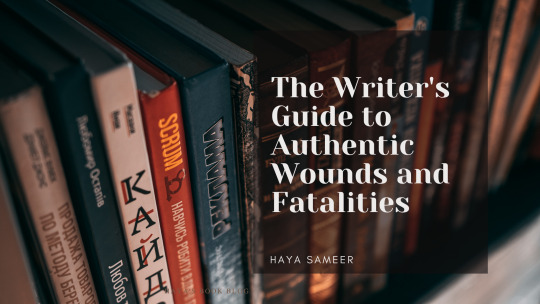
Writing fatal injuries in a story requires a delicate balance between realism and narrative impact. The portrayal of these life-altering events can evoke strong emotions in readers and shape the trajectory of your characters' journeys. In this blog, I will explore the intricacies of depicting fatal injuries in a manner that feels authentic, engaging, and respectful to the gravity of such circumstances. By understanding the nuances of fatal injuries, you will be equipped to craft compelling narratives that resonate with your readers.
Writing Fatal Injuries
When it comes to writing fatal injuries, it is crucial to approach the subject with care and accuracy. Fatal injuries carry immense consequences for your characters and can shape the trajectory of your story. By delving into the intricacies of portraying fatal injuries authentically, you can ensure that the gravity and impact of such events are effectively conveyed to your readers.
Choosing the right injuries for your story
Selecting the appropriate fatal injuries for your narrative involves considering various factors. Ask yourself: What purpose does this injury serve within the story? How does it affect the characters and the overall plot? Conduct thorough research to identify injuries that align with your story's context and resonate with the emotional journey of your characters.
For example, in a historical drama, you may research common fatal injuries during a particular era, such as battlefield injuries, diseases, or accidents prevalent at the time. In a crime thriller, you might explore the portrayal of fatal gunshot wounds or traumatic injuries resulting from violent encounters. By aligning the injuries with the context and themes of your story, you create a more immersive and believable experience for your readers.
Researching the mechanics of fatal injuries
To portray fatal injuries convincingly, it is essential to delve into the mechanics behind them. Understand the specific anatomical structures and systems involved, as well as the forces or mechanisms that can lead to fatal outcomes. Explore medical resources, consult experts if possible, and gather insights into the physiological and psychological implications of such injuries.
For instance, if your character suffers a fatal stab wound, research the anatomy involved, the potential organs affected, and the potential consequences such as internal bleeding or organ failure. By understanding the specific details and implications of the injury, you can describe the physical and emotional toll it takes on the character with greater accuracy and depth.
Depicting the immediate aftermath
When writing about fatal injuries, vividly describe the immediate aftermath to capture the intense emotions and physical realities. Consider the sensory details, the shock and disbelief experienced by characters, and the chaotic environment that often surrounds such events. Balancing realism with the needs of your story, create a scene that immerses readers and evokes empathy.
For example, if a character experiences a fatal car accident, you can depict the chaos at the scene, the character's disorientation, and the reactions of witnesses. Emphasize the sensory details such as the sound of screeching tires or the smell of burning rubber, creating a visceral experience for your readers.
Emotional and dramatic impact on the narrative
The impact of fatal injuries extends beyond the immediate moment. Explore the ripple effects on other characters, relationships, and the overall plot. Delve into the emotional responses, grief, guilt, anger, or determination that arises in the aftermath of loss. Utilize these emotional arcs to deepen character development and drive the narrative forward.
For instance, the loss of a loved one due to a fatal illness might lead to grief and strained relationships among the remaining family members. The emotional journey of a character grappling with guilt and seeking redemption after causing a fatal accident can become a central theme in your story. By delving into these emotional arcs and their consequences, you add depth and resonance to your narrative.
Writing Minor Injuries
While fatal injuries may capture our attention with their dramatic impact, it is equally important to pay attention to the portrayal of minor injuries in your writing. Minor injuries, though less severe, can still significantly affect your characters and contribute to the authenticity of your story. In this section, we will explore the art of depicting minor injuries, ensuring that they are not overlooked or trivialized. By delving into the nuances of minor injuries, you can add depth and realism to your characters' experiences.
Types of minor injuries to consider
When crafting your story, it is essential to consider a range of minor injuries that can occur. These injuries can include cuts, bruises, sprains, minor burns, or even minor fractures. Each type of injury carries its own unique characteristics, associated pain levels, and recovery processes. By understanding these distinctions, you can create accurate and believable depictions that resonate with your readers.
For example, a character who sustains a cut on their hand may experience sharp pain, the sight of blood, and the need for immediate first aid. On the other hand, a character with a sprained ankle may struggle with mobility, experience swelling, and require rest and care for a few days. By paying attention to these specific details, you can enhance the realism of your storytelling.
Conveying pain and discomfort
When writing about minor injuries, it is important to effectively convey the pain and discomfort experienced by your characters. Consider describing the sensation of pain, the throbbing or stinging feeling, and how it affects their daily activities or interactions. Showcasing the emotional impact of pain, such as frustration, irritation, or vulnerability, can deepen the readers' connection to the character's experience.
For instance, if a character suffers from a sprained wrist, you can describe the dull ache that persists, making simple tasks like typing or holding objects challenging. By capturing these small but significant moments, you immerse readers in the character's struggle and create a more realistic portrayal.
Balancing realism with narrative pace
While it is important to depict minor injuries realistically, it is also crucial to strike a balance with the overall pace and momentum of your story. Consider the significance of the injury within the larger context of your narrative. Some injuries may require more detailed attention and impact the plot, while others may serve as background elements. Adjust the level of detail and focus accordingly, ensuring that the portrayal of minor injuries aligns with the narrative's flow.
For example, a small cut on a character's finger may not require an extensive description unless it becomes infected or triggers an unexpected consequence. By aligning the portrayal of minor injuries with their narrative relevance, you maintain a consistent pace while still acknowledging their impact on your characters' lives.
Writing Bloodshed And Realistic Blood Loss
When writing about wounds and injuries, it is essential to consider the amount of blood loss your characters may experience. Realistic portrayal of bloodshed can enhance the authenticity of your scenes and immerse readers in the gravity of the situation. In this section, we will explore the factors influencing blood loss and techniques for accurately depicting it in your writing.
Understanding blood loss and its impact on the body
To authentically portray blood loss, it's crucial to have a basic understanding of how the human body responds to injury. Research the circulatory system and the role of blood in transporting oxygen and nutrients throughout the body. Consider the different types of blood vessels and their potential for bleeding when injured. This knowledge will help you create realistic scenarios and determine the appropriate level of blood loss for specific injuries.
Factors influencing blood loss in different injury scenarios
The amount of blood loss can vary depending on the severity and location of the injury. Factors such as the size of blood vessels, the rate of bleeding, and the body's ability to clot play a significant role. For example, a deep laceration in an artery will result in more substantial blood loss compared to a superficial cut on the skin. Consider these factors when describing injuries and their resulting bloodshed.
Techniques for accurately portraying blood loss in writing
There are several techniques you can use to convey the realistic impact of blood loss in your writing. Describing the color, consistency, and flow of blood can provide vivid imagery. You can also include physical symptoms such as dizziness, weakness, or fainting that may accompany significant blood loss. Additionally, consider the emotional response of your characters and how they react to the sight of blood or their own injuries.
By incorporating these techniques, you can create scenes that evoke a visceral response in readers and enhance the authenticity of your writing.
Bruises: Colors, Progression, and Pain
Bruises are a common result of injuries, and understanding how they form, change in color, and cause discomfort can greatly enhance the realism of your writing. By accurately describing bruises, you can bring depth to your characters' injuries and portray their healing process convincingly.
Understanding the stages and colors of bruises
Bruises go through distinct stages of color as they heal. Initially, they may appear red or purple due to the broken blood vessels beneath the skin. Over time, the color changes to blue, green, yellow, and eventually fades to a brown or yellowish hue. Understanding this color progression can help you accurately describe the age of a bruise and the healing process.
For example, a fresh bruise might be vivid purple, indicating recent trauma, while a fading bruise may have a yellowish tinge, suggesting that healing has begun. By incorporating these color details, you can add realism to your characters' injuries and track the passage of time within your narrative.
Depicting the progression of bruises over time
As bruises heal, they often change in appearance and size. Initially, a bruise may be small and localized, but it can gradually spread and become more extensive. Describing this progression can provide a sense of the healing process and the passage of time within your story.
For instance, a character who sustains a significant blow to the face may develop a bruise that starts as a small spot near the eye but expands to cover a larger area over the next few days. By accurately portraying the progression of bruises, you enhance the authenticity of your characters' injuries and their recovery.
Conveying the pain and sensitivity associated with bruises
Bruises can be painful, sensitive to touch, and affect a character's movement and daily activities. Describing the pain and discomfort experienced by your characters can create empathy and immerse readers in their physical ordeals.
Consider conveying the tenderness of a bruise when pressure is applied, the throbbing sensation, or the limitation of movement due to the pain.
Remember The Side Effects
Injuries, whether minor or severe, often come with a range of side effects that can significantly impact your characters' lives. These side effects can extend beyond the physical realm and encompass emotional, psychological, and social aspects.
Physical side effects
Injuries can have profound physical side effects that go beyond the immediate pain and discomfort. Consider the potential consequences such as limited mobility, impaired coordination, chronic pain, or the need for assistive devices like crutches or braces. Describing these physical side effects can add depth to your characters' struggles and provide a realistic portrayal of their healing journey.
For example, a character who sustains a leg injury may experience difficulty walking, require physical therapy, or have long-term complications that affect their day-to-day activities. By addressing these physical side effects, you create a more nuanced depiction of the aftermath of injuries.
Emotional and psychological side effects
Injuries can have a profound emotional and psychological impact on characters. They may experience fear, anxiety, trauma, or a loss of confidence. Consider how the injury affects their self-image, relationships, or mental well-being. Explore the emotional journey your characters undergo as they navigate the aftermath of their injuries.
For instance, a character who survives a near-fatal accident may develop post-traumatic stress disorder (PTSD) and struggle with recurring nightmares or panic attacks. By incorporating these emotional and psychological side effects, you can deepen the complexity of your characters and their responses to traumatic experiences.
Social implications and changes
Injuries can also lead to significant social changes for your characters. They may face challenges in their personal relationships, encounter stigma or discrimination, or experience changes in their roles or identities. Explore how the injury affects their interactions with others and their sense of belonging in the world.
For example, a character who sustains a facial injury may encounter judgment or stares from others, leading to self-consciousness or isolation. By addressing the social implications and changes resulting from injuries, you can create multi-dimensional characters and explore the impact of their injuries on their social dynamics.
By incorporating these various side effects into your writing, you bring depth and authenticity to your characters' experiences and showcase the wide-ranging impact of injuries.
Conclusion
Writing authentic wounds and fatalities requires attention to detail and a deep understanding of the physical, emotional, and psychological aspects involved. By following the guidelines and exploring the subheadings discussed in this guide, you can create compelling and realistic portrayals of injuries in your writing.
Remember to conduct thorough research on the specific injuries you want to depict, understanding their mechanics, symptoms, and potential outcomes. Consider the immediate and long-term effects on your characters, both physically and emotionally. Incorporate sensory details to immerse readers in the experience, describing the pain, bloodshed, colors of bruises, and the progression of healing.
Additionally, don't forget to address the side effects that injuries can have on your characters' lives. Explore the physical limitations, emotional struggles, and social implications that arise from their injuries. By delving into these aspects, you can create well-rounded characters and compelling narratives that resonate with readers.
I hope this blog on forging epic battles will help you in your writing journey. Be sure to comment any tips of your own to help your fellow authors prosper, and follow my blog for new blog updates every Monday and Thursday.
Looking For More Writing Tips And Tricks?
Are you an author looking for writing tips and tricks to better your manuscript? Or do you want to learn about how to get a literary agent, get published and properly market your book? Consider checking out the rest of Haya’s book blog where I post writing and publishing tips for authors every Monday and Thursday! And don’t forget to head over to my TikTok and Instagram profiles @hayatheauthor to learn more about my WIP and writing journey!
#hayatheauthor#haya's book blog#haya sameer#haya blogs#writers on tumblr#writer community#writer tools#writer blog#writer stuff#writer wednesday#writer tips#creative writing#writers of tumblr#writerscommunity#writeblr#writing community#writer spotlight#writer things#writing prompt#writing tools#writing stuff#writing#writing life#writing inspo#writing help#writing advice#writing inspiration#writing ideas#writing things#writing tip
4K notes
·
View notes
Text
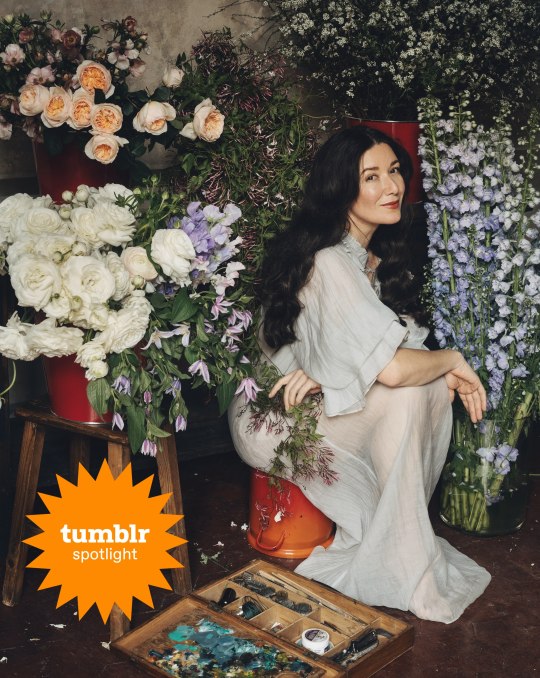
Writer Spotlight: Jamie Beck
Jamie Beck is a photographer residing in Provence, France. Her Tumblr blog, From Me To You, became immensely successful shortly after launching in 2009. Soon after, Jamie, along with her partner Kevin Burg, pioneered the use of Cinemagraphs in creative storytelling for brands. Since then, she has produced marketing and advertising campaigns for companies like Google, Samsung, Netflix, Disney, Microsoft, Nike, Volvo, and MTV, and was included in Adweek Magazine’s “Creative 100” among the industry’s top Visual Artists. In 2022, she released her first book, An American in Provence, which became a NYT Bestseller and Amazon #1 book in multiple categories, and featured in publications such as Vogue, goop, Who What Wear, and Forbes. Flowers of Provence is Jamie’s second book.
Can you tell us about how The Flowers of Provence came to be?
I refer to Provence often as ‘The Garden of Eden’ for her harmonious seasons that bring an ever-changing floral bounty through the landscape. My greatest joy in life is telling her story of flowers through photography so that we may all enjoy them, their beauty, their symbolism, and their contribution to the harmony of this land just a bit longer.

(Photograph: Jamie Beck)
How do your photography and writing work together? Do you write as part of your practice?
I constantly write small notations, which usually occur when I am alone in nature with the intention of creating a photograph or in my studio working alone on a still life. I write as I think in my head, so I have made it a very strict practice that when a thought or idea comes up, I stop and quickly write the text in the notes app on my phone or in a pocket journal I keep with me most of the time. If I don’t stop and write it down at that moment, I find it is gone forever. It is also the same practice for shooting flowers, especially in a place as seasonal as Provence. If I see something, I must capture it right away because it could be gone tomorrow.

(Photograph: Jamie Beck)
You got your start in commercial photography. What’s something you learned in those fields that has served you well in your current creative direction?
I think my understanding of bridging art and commerce came from my commercial photography background. I can make beautiful photographs of flowers all day long, but how to make a living off your art is a completely different skill that I am fortunate enough to have learned by working with so many different creative brands and products in the past.
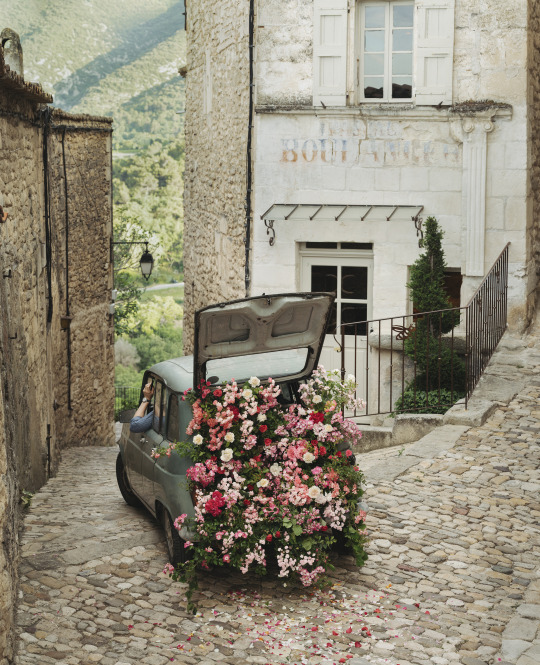
(Photograph: Jamie Beck)
Do you remember your first photograph?
Absolutely! I was 13 years old. My mother gave me her old Pentax 35mm film camera to play with. When I looked through the viewfinder, it was as if the imaginary world in my head could finally come to life! I gave my best friend a makeover, put her in an evening gown in the backyard of my parents’ house in Texas, and made my first photograph, which I thought was so glamorous! So Vogue!
You situate your photographic work with an introduction that charts the seasons in Provence through flowers. Are there any authors from the fields of nature writing and writing place that inspire you?
I absolutely adore Monty Don! His writing, his shoes, and his ease with nature and flowers—that’s a world in which I want to live. I also love Floret Flowers, especially on social media, as a way to learn the science behind flowers and how to grow them.
How did you decide on the order of the images within The Flowers of Provence?
Something I didn’t anticipate with a book deal is that I would actually be the one doing the layouts! I assumed I would hand over a folder of images, and an art director would decide the order. At first, it was overwhelming to sort through it all because the work is so personal, and I’m so visual. But in the end, it had to be me. It had to be my story and flow to be truly authentic. I tried to move through the seasons and colors of the landscape in a harmonious way that felt a bit magical, just as discovering Provence has felt to me.
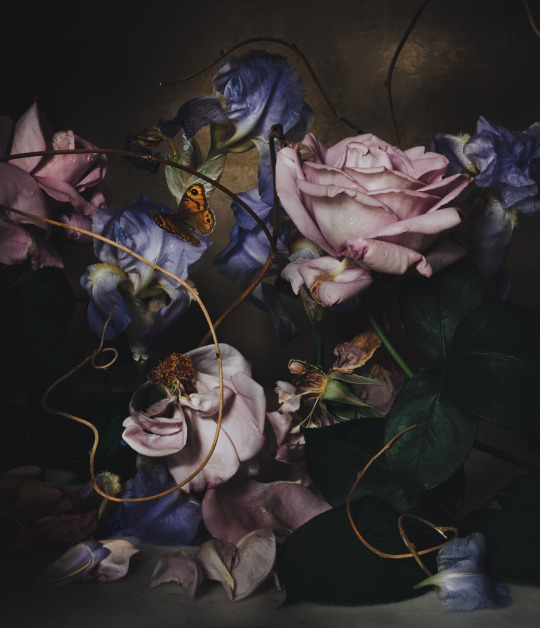
(Photograph: Jamie Beck)
How do you practice self-care when juggling work and life commitments alongside the creative process?
The creative process is typically a result that comes out of taking time for self-care. I get some of my best ideas for photographic projects or writing when I am in a bath or shower or go for a long (and restorative) walk in nature. Doing things for myself, such as how I dress or do my hair and makeup, is another form of creative expression that is satisfying.
What’s a place or motif you’d like to photograph that you haven’t had a chance to yet?
I am really interested in discovering more formal gardens in France. I like the idea of garden portraiture, trying to really capture the essence and spirit of places where man and nature intertwine.
Which artists do you return to for inspiration?
I’m absolutely obsessed with Édouard Manet—his color pallet and subject matter.
What are three things you can’t live without as an artist?
My camera, the French light, and flowers, of course.
What’s your favorite flower to photograph, and why?
I love roses. They remind me of my grandmother, who always grew roses and was my first teacher of nature. The perfume of roses and the vast variety of colors, names, and styles all make me totally crazy. I just love them. They simply bring me joy the same way seeing a rainbow in the sky does.

(Photograph: Jamie Beck)
#writer spotlight#jamie beck#the flowers of provence#art#photography#flowers#cottagecore#aesthetics#naturecore#flowercore#still life#nature aesthetic#artist#artists on tumblr#fine art photography#long post#travel#France#Provence#original photographers#photographers on tumblr
1K notes
·
View notes
Text

text by @roach-works (april 2024)
companion piece
#art#art on tumblr#artist on tumblr#tumblr spotlight#wolf#wolves#dogs#bunnies#original arts#rabbits#cybercore#grungecore#y2k#y2k art#low poly art#ps1 graphics#ps1 aesthetic#weirdcore#oddcore#dreamcore#ps1#retro gaming#cyber goth#angelic cybercore#cyber grunge#cyber y2k#retro tech#fucking bnnuy#cyber fairy grunge#cyber fairy
38 notes
·
View notes
Text

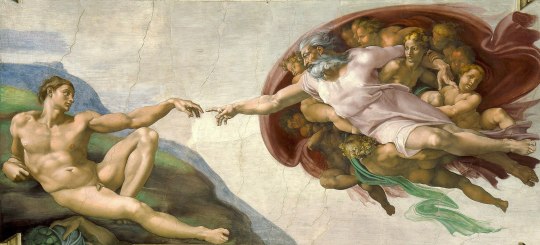
#cats of tumblr#ani#this is the same photo#creation of adam#creation of anakin#mostlycatsmostly#same thing tho#anakin skywalker#baby#my son#caturday#anakin in the spotlight#camera shy baby#catladychronicles#mine#cats#cats of the world#fav#fine art#michelangelo would be proud
252 notes
·
View notes
Text


ghostie bfs
#fun fact i was listening to spotlight while i posted this#inspired by dreambranding our fav dnfers#dnf art#dnf#dnf fanart#dreamblr#artists on tumblr#mcyt#digital art#my art#dream fanart#mcyt fanart#fanart#illustration#dreamnotfound#dreamnotfound fanart#dreamwastaken#dreamwastaken fanart#georgenotfound#georgenotfound fanart#gnf fanart#gnfblr#gnf#dnfblr
321 notes
·
View notes
Text
my new single “talk it out” is now yours 🖤
1 note
·
View note